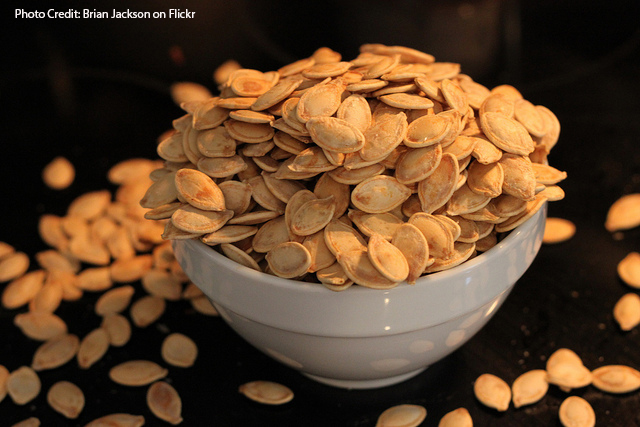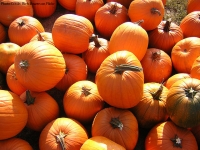Roasted Pumpkin Seeds

Start by rinsing the seeds in colander and try to get as much of the orange pulp off as you can.
Cover the seeds with warm water and some salt. Allow them to sit at room temperature for 24 hours. Drain the seeds in the colander and spread out onto a clean towel to pat dry.
Transfer seeds into a mixing bowl or large ziplock and toss seeds with a small amount of oil (optional) and your favorite spices. You can go sweet, savory or spicy. The classic version is just some sea salt. For a sweet version, you can try cinnamon, sugar, nutmeg, cloves and/or ginger. For a bit of spice you can use chili powder or cayenne. Oooh, how about lemon pepper? What about curry? Hmmm...Think of your favorite spice combination and give it a try. Less is best at first and then you can add more on your second batch if necessary.
Once the seeds are coated, lay them out in a single layer on a baking sheet. Place them in a cold oven and set to 200° Fahrenheit. You can go as low as 150° F or as high as 300° F. The higher the temp the less time it will take to bake. Stir every 10-20 minutes, depending on how hot your oven is. There's great variation in seed size, so this process includes some guessing and checking. You'll know they're done when you taste one and it crunches pleasantly in your mouth.
Pumpkin Butter
 Cut the pumpkin in half, scoop out seeds (set aside for roasting - see above recipe) and stringy "guts." Turn over shell side up onto a lightly oiled baking sheet. If pumpkin is too large you can cut shell into smaller pieces to fit onto the pan.
Cut the pumpkin in half, scoop out seeds (set aside for roasting - see above recipe) and stringy "guts." Turn over shell side up onto a lightly oiled baking sheet. If pumpkin is too large you can cut shell into smaller pieces to fit onto the pan.
Roast in the oven at 375° Fahrenheit until tender enough to pierce easily with a fork through the shell (usually takes about an hour). Scoop out the pumpkin "meat" and transfer to heavy bottomed stock pot.
Here's where the recipe is in your hands - add a variety of different spices, according to your taste, which can include maple syrup, brown sugar, cinnamon, nutmeg, clove, all spice, ginger, salt and/or pepper.
Less is best and take note of what and how much of each, so you can adjust your second batch. Flavors will concentrate, so a little spice will go a long way. Slowly cook down until the mixture rounds nicely on a spoon.
Transfer to warm, clean, sterilized jars and place a warm cap on wiped jar lip and screw on band. Finally, process jars in boiling water for 10 -15 minutes. This pumpkin butter is great on graham crackers, toast, apple muffins, or cinnamon raisin bagels! Note: feel free to add different squash cultivars into the mix before cooking down. Apples and pears match nicely with these flavors as well.
Have these recipes intrigued your taste buds to learn more about cooking? Come check out the upcoming Cooking Workshops at the Urban Ecology Center!





